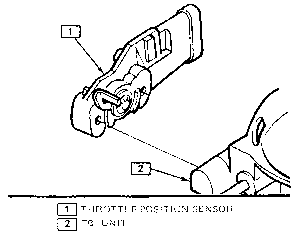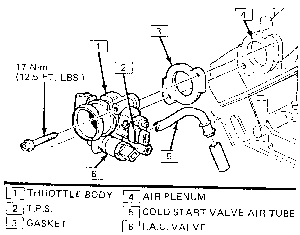Tech Tips: Throttle Position Sensor...
by Elmer Schild
The throttle position sensor is a potentiometer, connected to the throttle shaft on the throttle body. The TPS electrical circuit consists of a 5V supply line which is grey and a ground path line which is black, both provided by the ECM. A third wire is used as a signal line to the ECM. By monitoring the voltage on the signal line, the ECM calculates throttle position. As the throttle valve angle is changed (accelerator pedal moved), the signal voltage of the TPS also changes. At closed throttle position, the signal of the TPS is low -1.25 volts. As the throttle valve opens, the signal voltage increases so that, at wide open throttle it should be approx. 5 volts.

The ECM can determine fuel delivery based on throttle valve angle (driver demand). A broken or loose TPS can cause intermittent bursts of fuel from the injector and an unstable idle, because the ECM thinks the throttle is moving. A problem in any of these TPS circuits, will set either a code 21 or 22. Once a trouble code is set, the ECM will use an artificial default value for the TPS, and some vehicle performance will return.
The TPS is not adjustable. The ECM uses the reading at closed throttle for the zero reading, so no adjustment is necessary.

A Code 21 will set (if signal voltage high):
TPS reading is above 2.5 volts.
Engine speed is less than 1800 RPM.
MAP reading is below 60 kPa.
All of the above conditions are present for 2 seconds.
A Code 22 will set if(signal voltage low):
Engine is running.
TPS voltage is below .2 volts (200 mv).
Both of these codes are the same for 2.5 or 2.8 engines.
A Scan tool or Lab Scope is required to perform these tests.
On 2.5 engines ('84 to '86) there should be a heat shield by the TPS or the EGR valve.
On 2.5 engines the TPS is located on the TBI. On 2.8 engines the TPS is located on the engine side of the air cleaner hose on the throttle valve.